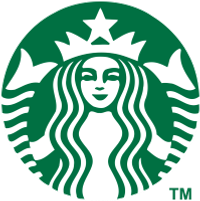
Starbucks Corp
NASDAQ:SBUX
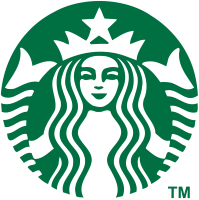

| US |

|
Johnson & Johnson
NYSE:JNJ
|
Pharmaceuticals
|
| US |

|
Berkshire Hathaway Inc
NYSE:BRK.A
|
Financial Services
|
| US |

|
Bank of America Corp
NYSE:BAC
|
Banking
|
| US |

|
Mastercard Inc
NYSE:MA
|
Technology
|
| US |
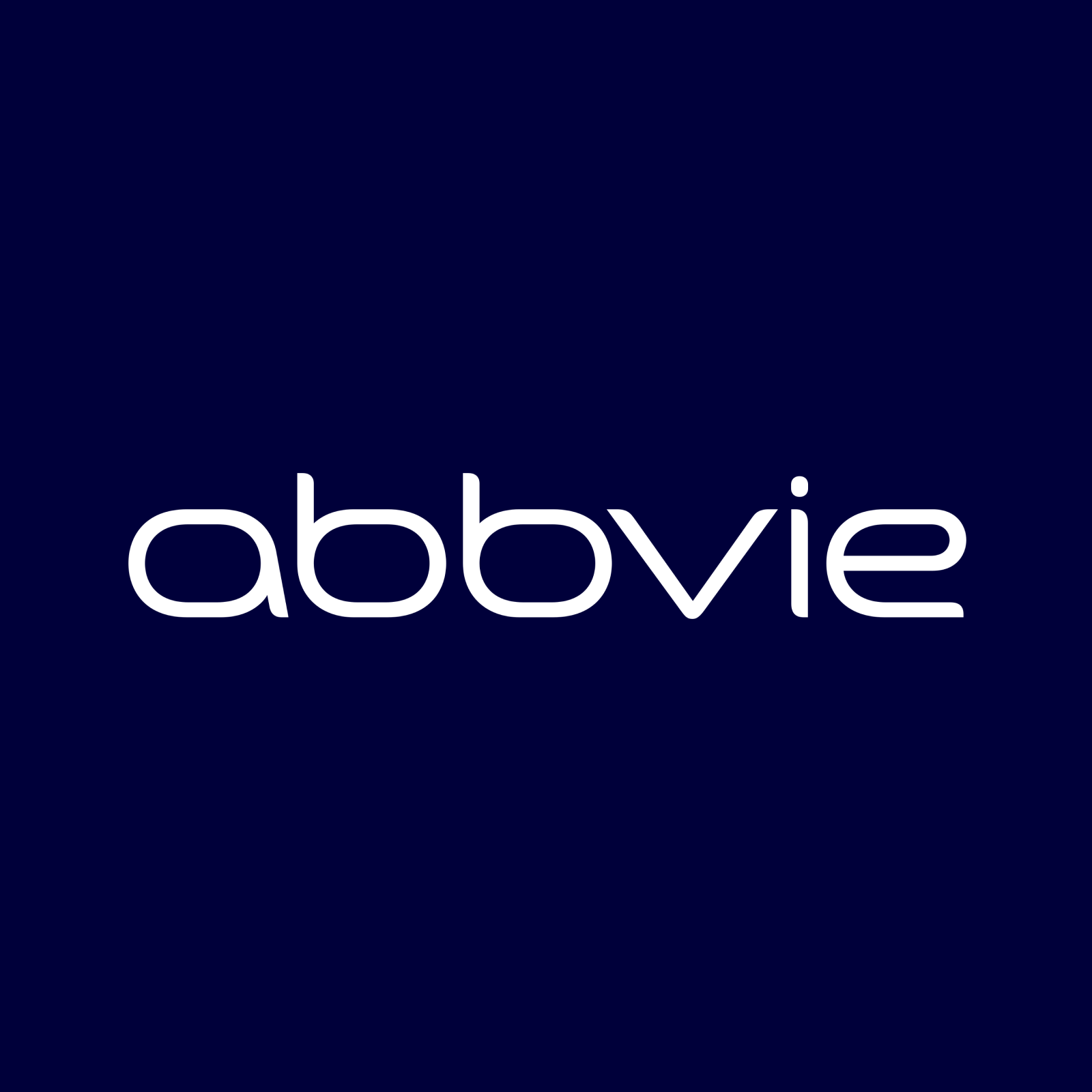
|
Abbvie Inc
NYSE:ABBV
|
Biotechnology
|
| US |

|
Pfizer Inc
NYSE:PFE
|
Pharmaceuticals
|
| US |

|
Palantir Technologies Inc
NYSE:PLTR
|
Technology
|
| US |

|
Nike Inc
NYSE:NKE
|
Textiles, Apparel & Luxury Goods
|
| US |

|
Visa Inc
NYSE:V
|
Technology
|
| CN |

|
Alibaba Group Holding Ltd
NYSE:BABA
|
Retail
|
| US |

|
3M Co
NYSE:MMM
|
Industrial Conglomerates
|
| US |

|
JPMorgan Chase & Co
NYSE:JPM
|
Banking
|
| US |

|
Coca-Cola Co
NYSE:KO
|
Beverages
|
| US |

|
Realty Income Corp
NYSE:O
|
Real Estate
|
| US |

|
Walt Disney Co
NYSE:DIS
|
Media
|
| US |

|
PayPal Holdings Inc
NASDAQ:PYPL
|
Technology
|
Utilize notes to systematically review your investment decisions. By reflecting on past outcomes, you can discern effective strategies and identify those that underperformed. This continuous feedback loop enables you to adapt and refine your approach, optimizing for future success.
Each note serves as a learning point, offering insights into your decision-making processes. Over time, you'll accumulate a personalized database of knowledge, enhancing your ability to make informed decisions quickly and effectively.
With a comprehensive record of your investment history at your fingertips, you can compare current opportunities against past experiences. This not only bolsters your confidence but also ensures that each decision is grounded in a well-documented rationale.
Do you really want to delete this note?
This action cannot be undone.

| 52 Week Range |
72.5
107.21
|
| Price Target |
|
We'll email you a reminder when the closing price reaches USD.
Choose the stock you wish to monitor with a price alert.

|
Johnson & Johnson
NYSE:JNJ
|
US |

|
Berkshire Hathaway Inc
NYSE:BRK.A
|
US |

|
Bank of America Corp
NYSE:BAC
|
US |

|
Mastercard Inc
NYSE:MA
|
US |

|
Abbvie Inc
NYSE:ABBV
|
US |

|
Pfizer Inc
NYSE:PFE
|
US |

|
Palantir Technologies Inc
NYSE:PLTR
|
US |

|
Nike Inc
NYSE:NKE
|
US |

|
Visa Inc
NYSE:V
|
US |

|
Alibaba Group Holding Ltd
NYSE:BABA
|
CN |

|
3M Co
NYSE:MMM
|
US |

|
JPMorgan Chase & Co
NYSE:JPM
|
US |

|
Coca-Cola Co
NYSE:KO
|
US |

|
Realty Income Corp
NYSE:O
|
US |

|
Walt Disney Co
NYSE:DIS
|
US |

|
PayPal Holdings Inc
NASDAQ:PYPL
|
US |
This alert will be permanently deleted.
 Starbucks Corp
Starbucks Corp


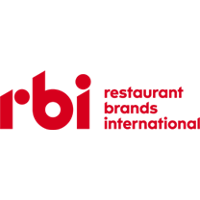
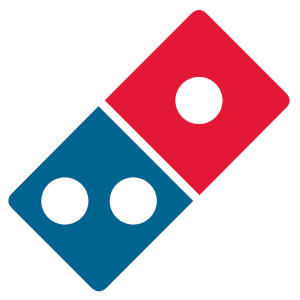
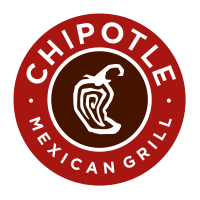
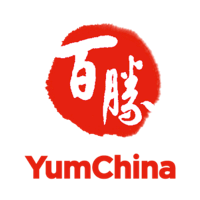

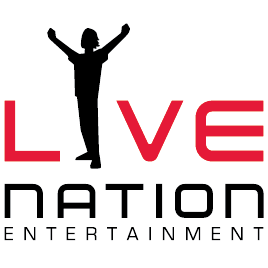

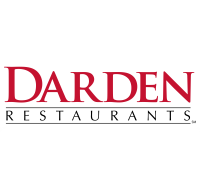


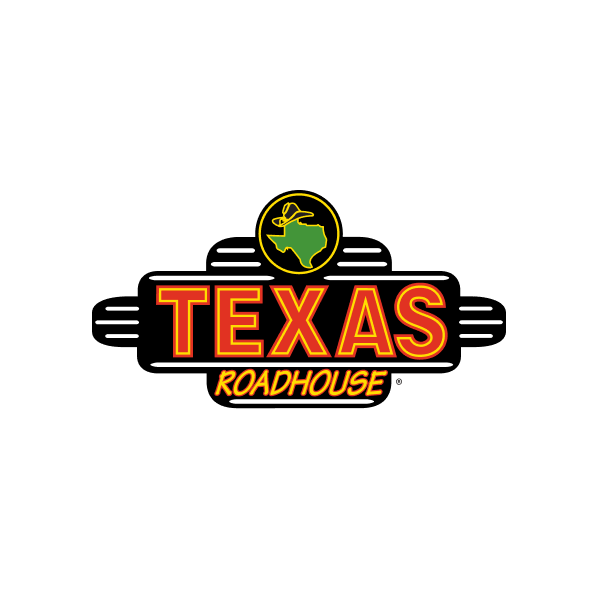


 You don't have any saved screeners yet
You don't have any saved screeners yet

Good afternoon. My name is Diego, and I will be your conference operator today. I would like to welcome everyone to Starbucks First Quarter Fiscal Year 2023 Conference Call. All lines have been placed on mute to prevent any background noise. After the speakers' remarks, there will be a question-and-answer session. [Operator Instructions] I will now turn the call over to Tiffany Willis, Vice President of Investor Relations. Ms. Willis, you may now begin your conference.
Thank you, Diego, and good afternoon, everyone, and thank you for joining us today to discuss Starbucks' First Quarter Fiscal Year 2023 results. Today's discussion will be led by Howard Schultz, Interim Chief Executive Officer; Brady Brewer, Executive Vice President and Chief Marketing Officer; and Rachel Ruggeri, Executive Vice President and Chief Financial Officer. And for Q&A, we'll be joined by Frank Britt, Executive Vice President, Chief Strategy and Transformation Officer; Sara Trilling, Executive Vice President and President of Starbucks North America; Michael Conway, Group President of International and Channel Development; and Belinda Wong, Chairwoman of Starbucks China, who is joining us today from on the ground in China.
This conference call will include forward-looking statements, which are subject to various risks and uncertainties that could cause our actual results to differ materially from these statements. Any such statements should be considered in conjunction with cautionary statements in our earnings release and risk factors discussed in our filings with the SEC, including our latest annual report on Form 10-K and quarterly reports on Form 10-Q.
Starbucks assumes no obligation to update any of these forward-looking statements or information. GAAP results in first quarter fiscal year 2023 and the comparative period includes several items related to strategic actions, including restructuring and impairment charges, transaction and integration costs and other items. These items are excluded from our non-GAAP results. All numbers referenced on today's call are on a non-GAAP basis unless otherwise noted or there is no non-GAAP adjustment related to the metric.
For non-GAAP financial measures mentioned in today's call, please refer to the earnings release and our website at investor.starbucks.com to find reconciliations of those non-GAAP measures to their corresponding GAAP measures. This call is being webcast, and an archive of the webcast will be available on our website through Friday, March 3, 2023.
And for calendar planning purposes, please note that our second quarter fiscal year 2023 earnings call has been tentatively scheduled for Tuesday, May 2, 2023. Now before I turn the call over, let me first say thank you to Howard. Because in our short amount of time together, I have witnessed a relentless focus on our culture while not compromising results. You have reinforced the importance of dreaming bigger than others may even think is possible. And for that, I will forever be grateful. And so now the floor is yours. Howard.
Thank you, Tiffany. I did not expect that. Thank you very much. Good afternoon, and welcome, everyone. I'm pleased to comment on the strong financial and operating results Starbucks reported today, highlighted by record quarterly sales of $8.7 billion, up 8% over last year, up 12%, excluding foreign exchange, a stunning 10% comp growth in the U.S. and North America, 5% comp growth globally. And except for China, very strong sales and comp growth in every international market we are in.
We posted strong results despite challenging global consumer and inflationary environments, a softer quarter for retail overall and an unprecedented COVID-related headwinds that unfolded in China. Credit belongs to our partners around the world who continue to successfully satisfy record demand in our stores while delivering an elevated Starbucks Experience to our customers. In China, COVID-related mobility restrictions and a spike in COVID infections following the end of zero COVID resulted in comp sales of minus 29% for the quarter, 4x worse than what we expected.
Weak sales combined with the cost to support the health, the safety and well-being of our partners, our first priority, negatively impacted total company earnings by $0.06, resulting in Q1 EPS of $0.75 per share. Despite short-term headwinds, we are confident that the end of Zero COVID marks the beginning of China's emergence from three years of pandemic, puts the country on a path to reintroducing normalcy and routine back into people's lives and positions the country to resume pre-COVID levels of consumer, social and economic growth.
We also believe at the end of Zero COVID will enable renewed consumer activity in China and recovery of our business in the back half of fiscal 2023. Our view is informed by patterns of post-COVID behaviors we have seen in countries around the world as consumer activity accelerates as years of pent-up demand is released. Today, our stores in China are again open without restriction and our partners are back at work. Many have been infected and recovered from COVID.
Noteworthy is that we saw a meaningful sequential improvement in sales and traffic as we move through January as people began resuming aspects of their pre-COVID lives, including gradually returning to our stores. More on China shortly. Our performance in Q1 underscores the success of the investments we are making in our people in extending our global leadership around everything coffee and in relevant innovation that together are driving sales and transaction growth around the world.
Starbucks is more relevant globally today than ever before in our history, ideally positioning us to successfully execute our ambitious growth agenda and have roughly 45,000 stores delivering best-in-class returns around the world by the end of fiscal 2025. On today's call, I will highlight the drivers of our performance in Q1 and provide an update on the progress of our reinvention initiatives.
I will then provide granular details specifically around the shape of our business in China and shine a bright light on the positive correlation between increases in consumer activity in China and the recovery of our business. Next, Brady will detail the beverage, food, mobile, digital and store innovation that drove record demand for Starbucks Coffee in every market outside of China in Q1. And he will speak to our record holiday performance, the strong growth in U.S. Starbucks Rewards membership sequentially and year-over-year and the extraordinary record of $3.3 billion loaded on cards and gifted in the U.S.
We entered Q1 with roughly $2 billion globally waiting to be spent in our stores, increased Starbucks Rewards membership and card loads serve as both a current annuity and the future driver of our business. And then finally, Rachel will highlight our Q1 financial and operating performance and speak to the confidence we have in our full-year 2023 guidance despite the significant impact from China, and we'll turn the call over to the operator for Q&A.
Let me begin with North America. The record demand for Starbucks Coffee in North America, we've reported on our Q4 call accelerated in Q1 and through holiday. Despite the difficult operating environment that most retailers, particularly brick-and-mortar retailers experienced in the quarter. Average weekly sales in the U.S. company-operated stores reached a record high in Q1, exceeding the prior record set in Q4 of fiscal '22.
This is -- this next line, I think, is just -- even when I read it, I'm surprised, with eight of the 10 highest sales days in our history recorded in the quarter. Consistently strong demand drove revenues up 14% to a quarterly record of $6.6 billion and a comp sale of 10% over last year. And Q1 momentum has continued in Q2. Active Starbucks Rewards membership in the U.S. exiting Q1 totaled over 30 million members, up four million members or 15% over last year and up 6% sequentially.
Loyal Starbucks Reward members drove a record 56% of tender, up 3% from last year, reflecting increased customer engagement throughout our system. Our convenience channels, Mobile Order & Pay, drive-through and delivery continue to fuel our business, delivering 72% of U.S. revenue in Q1.
We continue to add high returning drive-throughs that attract new customers, expand our footprint and drive new customer occasions. Our over 6,600 store U.S. license business posted similar strong results with 32% revenue growth and double-digit comps across all operating segments.
What's interesting to me is while grocery retailers are representative segment within our licensed business experienced traffic and spend related headwinds across their store base in Q1, their Starbucks business proved to be the bright spot bringing incremental traffic into their stores and driving sales for us as well. We continued to roll out Starbucks Connect enabling licensed stores to offer all Starbucks Mobile Order & Pay and Rewards benefits, expanding the value offering we provide our customers and licensees and enabling us to capture demand across our broader store portfolio.
Starbucks Connect is proving to be highly incremental, and we see great upside for it. Cross-functional teams continue to successfully execute against our reinvention initiatives and our reinvention investments are having a measurable positive impact on our business, evidenced by an 8% improvement in U.S. hourly retail partner turnover. Improved turnover correlates to more stable store environments, elimination of new hire-related costs, particularly training and measurable improvements in productivity, speed of service and partner customer experience scores that we're already seeing.
Our Q1 performance demonstrates that our reinvention plan investments are the right investments that we are making and are delivering results and creating shareholder value, providing us with tremendous confidence in the revenue, margin and EPS expectations that we shared at our Investor Day. Let me turn to international. Outside of China, the momentum we saw in our International segment exiting Q4 continued in Q1. Excluding China and foreign currency translation, revenues for the quarter are up 25% and comps were up 11%, fueled by recovery consumption in Japan and a rebound in tourism activity across our EMEA markets, following the lift of COVID restrictions.
One great example is Alshaya. Alshaya is our license partner in the Middle East for the last 23 years and among our largest international licensees with over 1,800 stores across 13 markets. They reported their strongest quarter with the Starbucks brand ever in Q1. We added 370 new stores in international in Q1 and now operate 18,700 stores across 84 markets, 43% company-operated and 57% licensed.
Strong growth in our international license business reflects the outside returns the Starbucks brand delivers to our licensees, driving increased investment by our licensees in our business and growing customer engagement with our Starbucks brand around the world.
Turning to channel development. The Starbucks brand relevant innovation and seasonal moments are resonating with our customers and driving sales and occasions around the world, resulting in a 15% increase in channel revenues in Q1 over last year to $478 million. We continue to hold the #1 dollar share in U.S. at-home coffee and in Q1 outpaced dollar sales growth in North America ready-to-drink category overall, again demonstrating the unique power of the Starbucks brand. In China, Starbucks received the ready-to-drink new product launch of the Year award for the introduction of Bottled Frappuccino Oat Latte.
We will continue to delight our customers with exciting new beverage innovation in the months ahead, including with the launch of Starbucks ready-to-drink Pink Drink inspired by the overwhelming success of Pink Drinks served in our retail stores and certain to become a customer favorite, especially with our young customers and our Gen Z audience.
Let me begin the discussion around China by saying that Starbucks has been in China now for over 24 years, and that our confidence in the future of Starbucks business in China and our aspirations for the market and our partners has never been greater. We exited Q1 with almost 6,100 Starbucks stores across 240 cities, and our newest class of stores continue despite the challenges we've had to achieve best-in-class returns and profitability.
And we remain on plan to have 9,000 stores in China by the end of 2025. Our belief in China is based on our leadership position in the market, our relationship with our partners and the trust that we have among our Chinese customers and the market and our brand position.
Since 2020, our Starbucks China team has been navigating the most acute COVID-related mobility restrictions and disruptions anywhere in the world, while at the same time, developing the flexibility to execute under any COVID scenario. By leading in together in service of their customers and fellow partners, our China team has navigated every challenge obstacle and volatility that COVID had put in their way, building more capability, flexibility and operating muscle with each unexpected test.
That flexibility and operating muscle, coupled with deliberate investments that we've made throughout the pandemic, supported our business in Q1 and will increasingly drive efficiency, productivity, profitability and shareholder value and enable us to deliver an even more relevant and elevated Starbucks experience to our partners and our customers in the years ahead.
As I shared on our last call, our recovery in China gained momentum in Q4 of 2022 despite severe mobility restrictions in many of our larger cities. We saw sequential improvement in all key operating metrics driven by the success of mobile and digital technology investments and expanded delivery capabilities built during COVID that made it easier for our customers to engage with us and better enable us to serve them. The direct positive correlation we saw between increased consumer activity in China and sales in our stores and the speed and consistency with which our business was accelerating, gave us great confidence moving through the quarter.
However, in September, a new wave of COVID spiked resulting in further increased mobility restrictions, new mobile, digital and delivery capabilities enabled us to partially offset the reduction in store traffic in September. However, in early December, Zero COVID was lifted and COVID infection spiked across China, resulting in a dramatic decline in consumer activity across the country and causing the most severe COVID disruptions any retailer had encountered.
For us, at its peak, nearly 1,800 Starbucks stores were closed during that month. As a result, comps in Q1 declined 29% with a 42% comp decline in December alone. But like consumers everywhere, our customers in China are creating a full return to familiar pre-COVID routines and lifestyles and huge consumer demand in China is waiting to be unleashed. Early indications are that it is beginning to happen in our largest cities now with many Chinese recovered from COVID, people returning to work, border and travel restrictions lifted, mall traffic and retail store activity on the rise and consumers reintroducing social activity back into their daily lives.
We saw the strongest level of sustained customer activity we've seen in years in the run-up to and during Chinese New Year festivities. As Rachel would share, we are expecting the second half of fiscal 2023 in China to be stronger than the first half but uncertainties remain and the better part of valor is to remain cautious around precisely when our recovery in China will take full flight. However, when it does, pattern recognition, the return on pre-COVID routines and the adoption of new post-COVID routines will become self-evident in China, and customers will flock to Starbucks stores to enjoy moments of reconnection their favorite Starbucks beverages and the premium Starbucks experience our partners in China deliver.
And Q1 headwinds will shift to tailwinds. We've seen this pattern repeat in markets around the world, including the United States. Despite the challenges and the uncertainties of the last three years, Starbucks' commitment to China and to our partners and business in China has never wavered. Almost 25 years after entering the market, I remain more confident than ever that we are still only in the early chapters of our growth story in China, and I'm looking forward to being with our China partners for the first time in years when I visit the country this Spring.
Laxman's immersion continues to go spectacularly well. He and I engage daily as he absorbs more about our company and business and he wins the hearts and minds of Starbucks partners everywhere. Only weeks from now, Lax will take full control of the company and together with our leadership team, bring reinvention to life, guide Starbucks into a new era of growth and begin writing the next chapters of our storied history. I cannot be more confident that Lax is the right CEO at the right time for Starbucks. And Starbucks Coffee Company domestically and around the world is in great hands with him as the CEO.
This -- my last earnings call is very special for me and a powerful emotional reminder of the intersection of my life at Starbucks. It was 1983, walking the beautiful streets of Milan at the inspiration for what Starbucks could one day be and made first struck me. 40 years later, I'm not sure where the years have gone. 40 years later, we have over 36,000 stores around the world, serving over 100 million customers each week.
Along the way, we have created opportunity, cared for and improve the lives of millions of Starbucks partners and made progress against my goal of creating a different kind of company, a company steeped in humanity, humility and respect, where everyone is welcome, and we embrace the belief that our differences make us better and stronger. And a company unlike any company, my father ever got a chance to work for, but there's much more opportunity and much more work ahead.
Finally, while Starbucks has launched many successful coffee beverages over the years, my Starbucks journey will come full circle when I return to Milan later this month to introduce something much bigger than any new promotion or beverage. While I was in Italy last summer, I discovered an enduring, transformative new category and platform for the company, unlike anything I had ever experienced.
The word I would use to describe it without giving too much away is alchemy. We won't unveil details today, but it will be a game changer, so standby. Many people have asked me if my final earnings call as Starbucks CEO is bitter sweet, it really isn't. Starbucks business and brand, the quality of our coffee, the relevance of the Starbucks partner and customer experiences have defined us since our founding in 1971 and have never been better or stronger. And our future has never been brighter. It will be my pleasure to take a front row seat as Laxman leads Starbucks into and through the exciting new era of growth ahead.
With that, I'll turn the call over to Brady.
Thank you, Howard. I know I speak for so many when I say thank you for your relentless pursuit of elevating the Starbucks customer and partner experience. Your leadership to our reinvention has us well positioned to continue advancing towards our biggest aspirations with Laxman and our strengthened leadership team.
Good afternoon, everyone. I'm incredibly proud of our strong Q1 performance across all markets. Today, I'll focus on what we saw in the U.S. this quarter. In addition to the strong customer demand for Starbucks overall, our results benefited from last year's strategic pricing actions and increased food attached with record sales for both Sous Vide Egg Bites and breakfast sandwiches.
Our product portfolio and innovations continue to resonate with customers, especially our cold, customized beverage innovation. Beverage sales increased 13%, led by our strength in the espresso category, with featured holiday beverages like the Caramel Brulée Latte and sugar cookie almond milk latte contributing to growth.
Customized beverages continue to be a differentiator with customers all year long. Modifier sales were up 28% year-over-year in our U.S. company-operated stores, showing that customers are visiting Starbucks for beverages customized to their preferences that they cannot find anywhere else.
The strength and relevance of the Starbucks brand continued to accelerate this holiday season as we surpassed, as Howard said, 30 million active Starbucks Rewards members, we drove record-breaking mobile order usage at 27% of transactions in the U.S. company-operated stores, and we reached an all-time high in the population of our weekly total active customer base. We also saw more than $3.3 billion loaded on Starbucks cards in the U.S., exceeding last year's record results and setting a new record.
In fact, our gifting business was so strong that the unit sales of Starbucks Cards were greater than the next four brands of gift cards combined. This not only drives new Starbucks Rewards registrations, but it also drives our business in Q2 as evidenced by the high 56% Starbucks Reward tender that we saw in our U.S. company-operated stores at the end of the quarter. Said another way, during the holiday season, Starbucks truly becomes the currency of kindness and it drives our business.
At the heart of Starbucks is uplifting human connection. This is a core part of our reinvention, and we accelerated our reinvention investments in the quarter, driving continued improvement in our industry-leading partner retention. We're also committed to elevating the customer experience. And within the quarter, we launched our first Starbucks rewards -- Reward Together partnership with Delta Airlines, which offers members of both Delta SkyMiles and Starbucks Rewards, new ways to earn rewards.
On December 8, we also launched the Starbucks Rewards Odyssey experience in beta to select members. Odyssey members have been invited to partake in multiple Odyssey journeys driving increased engagement and loyalty from our members and now ownership in their loyalty experience.
We also announced the national expansion of our partnership with DoorDash, which alongside Uber Eats also provides us the ability to serve customers in a convenient way and enjoy Starbucks wherever they are. And we announced changes to our Starbucks Rewards redemption tiers, which not only supports critical program growth and discount efficiencies, but it also allows us to add increasing value relevant to our members by making popular items like cold coffee, more attainable, the changes that our members have praised.
Finally, we're furthering the value delivered to our SR members by bringing them coffeehouse culture and content through a new series in the Starbucks app called the Starbucks Daily, which will launch with [indiscernible] this month. In short, Starbucks is an incredibly strong brand and one that is poised for growth.
I'll now turn it over to Rachel.
Thank you, Brady, and good afternoon, everyone. Let me begin by saying that I am very proud of what we achieved in Q1 with nearly every business contributing to our strong performance. The remarkable strength in nearly all major markets and channels across the globe led to outperformance across our metrics when excluding the headwinds in China.
Our Q1 consolidated revenues of $8.7 billion were another record quarterly high, up 8% from the prior year or 12% when excluding an approximately 3% impact of foreign currency translation. The revenue growth was primarily driven by 5% comparable store sales growth, 5% net new store growth over the past 12 months, impressive momentum in our U.S. and international licensed stores as well as our channel development businesses. When excluding China and the impact from foreign currency translation, revenues in all three of our reporting segments continued to expand double-digit, demonstrating the demand of our diverse portfolio and power of our innovation as we focus on our new era of growth.
Q1 consolidated operating margin contracted 60 basis points from the prior year to 14.5%, primarily driven by investments in growth in labor, part of which represent the reinvention plan, inflation and deleverage in China. The contraction was partially offset by pricing in North America and sales leverage across markets outside of China. The deleverage in China was more significant than expected, while other margin drivers were largely in line with our original guidance.
Q1 EPS was $0.75, up 4% from the prior year, including an approximate $0.06 dilutive impact from the headwinds in China relative to our original expectations. Although we anticipated China's recovery to be nonlinear, the headwinds in Q1 were larger than our prior estimate by approximately $0.06 due to the unforeseen changes in COVID restriction and infection spikes. The significant strength across our global portfolio, however, largely offset the impacts from China's performance, keeping us on track to achieve our fiscal 2023 growth targets, as I'll discuss in a moment.
First, I'll provide segment highlights for Q1. North America delivered another quarter of all-time record revenue in Q1 of $6.6 billion, up 14% from the prior year, primarily driven by a 10% increase in comparable store sales, inclusive of a 9% increase in average ticket, net new store growth of 3% over the past 12 months and very strong growth in our U.S. licensed store business.
Our U.S. company-operated stores had a record revenue quarter with 10% comp growth in Q1, fueled by strength in digital, innovation, and record holiday performance as both Howard and Brady shared. In addition to the continued strength in ticket, the number of unique customers grew 10%, setting another all-time record and further expanding our reach.
Let me also highlight the very strong performance of U.S. licensed stores this quarter, which posted revenue growth in excess of 30% and 15% system comp growth over the prior year Q1 with strength across the portfolio. Performance was particularly strong in retail and travel as pre-COVID behavior normalcy returns, with U.S. licensed store revenue indexing at roughly a 140% of pre-pandemic levels.
Grocery also experienced strong growth, powered by the continued rollout of Starbucks Connect despite the overall decline in customer traffic across the rest of grocery store industry. North America's operating margin was 18.6% in Q1, contracting 20 basis points from the prior year, primarily due to previously committed investments in labor, including enhanced store partner wages and benefits as well as inflationary headwinds, partially offset by pricing and sales leverage.
While Q1 operating margin declined sequentially from Q4 fiscal 2022, driven primarily by seasonal sales mix shift, we gained productivity through reinvention, including improved partner retention and equipment rollouts, paving the way for progressive margin expansion in the latter half of fiscal 2023 and years to come.
Moving to international. The segment delivered revenue of $1.7 billion in Q1, down 10% from the prior year or up 2% when excluding a nearly 13% unfavorable impact from foreign currency translation. The revenue growth was driven by sustained momentum across all major markets outside of China as well as an 8% increase in total store count over the past 12 months. The growth was partially offset by a 13% decline in comparable store sales, including a 29% decline in China.
Although China posted a comp decline of 29% in Q1, the heaviest decline of 42% was experienced in December with pressure carrying into Q2, all of which was well below our original estimates, as mentioned in my opening. Just to give you a little color, at its peak, nearly 1,800 stores or close to 30% of our portfolio were temporarily closed due to sharp fall in traffic and labor shortage because of partners falling sick to COVID.
Outside of China and excluding the impact of foreign currency translation, our diverse international markets across the globe continued to outperform in Q1. Once again, these markets together achieved double-digit comp growth, driven primarily by transactions. Their revenue grew 25% in the quarter when excluding a 17% unfavorable impact of foreign currency translation with successful holiday campaigns across all regions.
Operating margins for the International segment was 14.3% in Q1, down 400 basis points from the prior year, mainly driven by deleverage in China, but partially offset by strong sales leverage across other global markets and the resulting business mix.
Shifting to channel development. The segment's revenue grew 15% to $478 million in Q1, driven by double-digit growth in both the Global Coffee Alliance and our global ready-to-drink businesses. Within the Global Coffee Alliance, newer platforms continue to be key drivers of growth, including Starbucks by Nespresso and Starbucks Creamers.
Our ready-to-drink lineups are fueled by core platforms in our international markets and robust innovations in the pipeline. Sustainability was also top of mind for the segment, trailblazing recyclable, multi-serve iced coffee bottle made from recyclable plastic. The segment's operating margin was 47.4% in Q1, up 350 basis points from the prior year, primarily driven by strength in our North American Coffee Partnership joint venture income.
Now moving to our guidance for fiscal 2023. Let me take a few minutes to go deeper on the implications to our business from the challenges we're facing in China. In January, China's comparable sales growth was a decline of approximately 15%, which was an improvement from a decline of 42% in December. While we're seeing early positive signs of momentum rebuilding, headwinds related to COVID still exist in the market and are expected to impact the full Q2. As a result, we anticipate the negative impact on the operating income in Q2 to be comparable to or greater than Q1.
Although we previously projected China recovery as early as Q3 of this fiscal year, we do not have clear line of sight into the timing of recovery and believe China's contribution as a percentage of our fiscal 2023 consolidated operating income to be lower than our original guidance assumed. However, our long-term opportunity in China is very strong. We expect the market to see meaningful sales rebound once recovery is in full swing. Until then, we continue to stay focused on the long-term growth opportunities that China will deliver while weathering the short-term and transitory challenges.
Now even with that backdrop and taking into account the uncertainty of China's recovery timing, our fiscal 2023 guidance remains unchanged. As a few point of clarification on guidance, in China, we now expect negative comps to continue through the second quarter, followed by improvement in the balance of the year.
Another point of clarification is that China store growth remains unchanged as we execute our strategy to expand in new cities. Also, our guidance continues to include the impacts of significant investments related to our reinvention plan and inflationary pressures which largely remain comparable to what we had originally anticipated.
Lastly, our guidance reflects the latest projection of foreign currency translation with approximate two and three percentage point unfavorable impacts on fiscal 2023 revenue and earnings growth, respectively. This reflects an improvement of approximately one percentage point on both revenue and earnings growth relative to our previous expectations.
Additionally, in terms of quarterly shape, operating margin is expected to decline sequentially in Q2, near prior year level driven primarily by the COVID-related headwinds in China. We still expect margins to expand in the back half of the year, improving sequentially in Q3 and Q4 as sales leverage, pricing, productivity gains from reinvention as well as recovery in China begin to contribute to positive margin expansion as the year progresses. We continue to expect the quarterly EPS shape to roughly mirror the shape of operating margin with a sequential decline in Q2 and a meaningful step up in the second half of the fiscal year.
Lastly, we also remain committed to returning approximately $20 billion to shareholders by the end of fiscal 2025 between share repurchases and dividends. Our repurchase program resumed in Q1 of this fiscal year and will accelerate as reinvention gains ground. Since the inception of our dividend program, 51 quarters ago, our annual dividend growth has averaged greater than 20%, and our dividend payout rates near the top percentile of growth companies of our size and our scale, which is an exceptional complement to our long-term EPS growth target as high as 15% to 20%.
In summary, here are key takeaways for my discussion today. First, our business and our brand are strong and strengthening every day as demonstrated by the record sales in Q1. Next, our Q1 performance serves as proof point that we are progressing nicely against our strategy, inclusive of our reinvention plan and delivering the results we projected. And finally, we will continue to innovate in the critical areas of digital, product and stores as our new era of growth is just beginning to unlock, and we are excited about what lies ahead, including welcoming Laxman as CEO this spring and on our second quarterly earnings call.
Now before I close, I want to express my sincere gratitude for a hard work of our Starbucks Green Apron partners across the globe, including those in China who serve our customers in a way that only Starbucks knows how.
Also, with this being Howard's last earnings call, I would be remiss if I didn't take a moment to thank Howard for his vision to create a company that is truly different, where value is created for all. I know that I speak for many of us when I say we will honor your legacy while taking the company to the next level, all in making you, our partners, and our shareholders proud.
With that, we'll open the call to Q&A. Operator?
Thank you. [Operator Instructions]. And your first question comes from Jeffrey Bernstein with Barclays.
Great. Thank you very much. And congratulations, Howard, on your final call.
Thank you.
Thanks, Jeff.
My question is just on -- as I think about the U.S. comp clearly strong, up 10%. I'm just wondering if you can talk a little bit about the traffic you're seeing today versus maybe pre-COVID. I think we all recognize that the sales are well above pre-COVID levels in total. But clearly, the average check has been the driver of that. I'm just wondering if you can -- how you get comfortable with the fact that the brand is as strong as ever, whether you're able to look at the number of beverages sold. Maybe that's a better indicator or how you think about the business, again, when you strip out obviously the outsized menu pricing that's been taken.
And just as an aside, Howard, I think everyone was looking up Alchemy real quick since you made mention, I'm just wondering what specifically we're talking about as the definition seems to be transformation of matter? Would love to get any kind of incremental color you want to give? Thank you.
[Indiscernible]. Rachel, you want to take the comp question, maybe, Sara, can help you as well.
Sure. Let me start with that. Thanks, Jeffrey for the question. In response to your question around traffic, our 10% comp, as you know, was largely driven by ticket. Our transactions, transactions per store per day, which is how we measure the health of our business are still below pre-COVID levels and actually slightly below prior-year. But what's important is we saw our traffic, TSDs as well as our units and overall ticket grow in our highest demand period. So our morning daypart and our midday, which is up till about 1'o clock saw a year-over-year increase of both transactions and units as well as ticket.
In addition to that, those dayparts are also in line with 2019 levels. So why that gives us encouragement is our reinvention plan is squarely rooted at creating capacity in our busiest dayparts. So as we start to move along our reinvention plan, it's going to help us increase that capacity while creating a better experience for our partners and our customers. So that gives us a lot of confidence that our growth objectives and our ambitions for this year and beyond are well suited.
Thank you.
Next question.
And our next question comes from Sara Senatore with Bank of America. Please state your question. Sara, your line is open.
Sorry, hi, can you hear me now?
Yes, go ahead please.
Okay, thank you. I was wondering, Rachel, if you could just talk briefly, you mentioned China was a $0.06 headwind. So ex that, certainly, earnings would have actually been better than we were thinking. Could you just talk maybe in order of magnitude where internally you might have seen surprise? Is it the fact that U.S. comps came in a bit higher than your long-term guide has been? Is it from the other -- is it from the other geographies or segments. I just am trying to understand kind of how to think about that.
And a related question, I think you said last year, China was about 25% of what it normally would be. Are you able to give us any kind of gauge of what it might look like this year, given its slower to ramp than maybe you had anticipated?
Sure. Thanks, Sara. In terms of the question around Q1 and what drove our business outside of the headwinds in China. So if you took headwinds out, to your point, we would have been above expectations. It's a combination of things. It's stronger performance in our U.S. business, which is inclusive of our U.S. license. So our U.S. company operated as well as our U.S. license. It's also growth across our international markets. So excluding China, we had tremendous growth across our markets, which really speaks to the diversity of the depth and diversity of our portfolio. We also had tremendous growth in our channels business.
In addition to that, we saw some favorability in terms of foreign exchange, smaller, but that was also a combination. So it was all of those factors together, that would have given us a stronger Q1 than what we had originally expected. Now when you think about that as it pertains to the balance of the year, we're able to reaffirm our guidance because even though we're seeing headwinds in China, and we continue to believe we'll have strong momentum across the other businesses. You can imagine there are a lot of other factors at play continuing inflationary pressures, economic challenges. So the combination of all of that gives us confidence that reaffirming our guidance is right given the position we're in today.
Rachel, I wonder if Michael can just give us a little bit more color on how strong the international was across the board.
Yes. Thank you. To the question, I would say definitely our markets outside of China performed even better than we thought. Just to note a year-ago, most of our markets we would have said is fully recovered. And so what we're seeing now with this 25% growth is growth over growth and performance over performance. And we were also expecting in some markets to see the economy inflation slow demand and it hasn't.
So as Howard talked about the tailwind, we are seeing a true tailwind and continued recovery coming out of the pandemic in all of these markets. Just for example, Latin America, we're seeing revenue growth of over 50%; EMEA, over 20%; U.K., which is a company-operated market, is having double-digit comp growth; Asia-Pacific, over 20% revenue growth, and we actually crossed 5,000 stores across that region. And then Japan, which is our third largest company-operated market is also continuing with significant growth.
This is our eighth consecutive quarter of strong revenue growth, driven by not only product but actually digital. Within Japan, we are rolling out the digital flywheel, Mobile Order & Pay is fully penetrated. We've doubled our sales of Mobile Order & Pay over the last quarter. And we just introduced multi-tier redemption, which has shown success in the U.S. We're seeing a significant improvement here as well.
So as we think about going forward in these markets, we see more tailwind. The international travel is just starting to come back as they start to go to other markets as well, we're going to see further tailwind going forward.
And just to answer your other question, Sara, last year, we had expected China to be about 25% of the total company operating income, which is generally where it landed, we'll expect maybe closer to 50% based on what we know today.
Thank you. Your next question comes from David Palmer with Evercore ISI. Please go ahead.
Thanks and congratulations, Howard. Two big picture questions that often come up with long-term investors. I don't know if this is quite the forum, but maybe a quick comment on each. One would be how you're thinking about the brand and how it would do in a recession? Should we have one? Why would go perhaps better than 2007 and 2008.
And then secondly, I think we can all agree that Zero COVID is the biggest factor with China. But any sort of metrics that make you feel confident that the brand would have a full recovery, people ask about competition in China? And any sort of metrics around brand scores or anything that gives you confidence that you'll have a full recovery would be helpful. Thanks.
David, thank you. Belinda is on the call, and she's sitting, I believe, in Shanghai, and I think she'd be best suited to answer your question regarding China recovery, the situation that she's seeing on the ground. So Belinda, can you respond to that first. And then Brady will talk about the brand.
Yes. Thank you, Howard. Hi, thank you for the question. Starbucks brand relevance remains as strong as ever, and we're best positioned to capture the growth opportunities ahead. Our latest brand tracker shows Starbucks remains Chinese customers' first choice in the away-from-home coffee category. Also, Starbucks is the brand leader in terms of brand affinity, visitation and frequency. And despite all the COVID disruptions we faced in Q1, our customer connection score also reached another record high in Q1. So our strong operating muscle and the strong relationships that we have with our customers and our partners and the strength of our brand, really, we are best positioned and so ready to recover and accelerate the growth of our business.
And I would say that there's no other competitor that can match the competitive advantages that we have, the quality of our coffee, our brand strength, our connection, our unique third place and our omnichannel capabilities, our national footprint and the digital ecosystem and supply chain excellence that we have built. Thank you.
Brady, do you want to go to brand?
Yes. As we think about weathering a recession in the U.S., it really comes down to two words for us, and that is momentum and innovation. And I'd say that when I say momentum, it's about relevance and resilience. And as we think about relevance, if we look at the last quarter, we have more customers in total population than ever in the U.S. They're very highly engaged. If we look at share of wallet and spend, 56% of our transactions were from our reward members. And just as Belinda said, in China, our U.S. customers see Starbucks as their first choice for coffee with leading affinities.
So from a brand standpoint, we're in a very strong position. When we look at resilience, last quarter, we saw not only ticket growth but transaction growth, even in the face of the macroeconomic headwinds. So in terms of momentum, we see that carrying into the quarter ahead and the year ahead. And then I'd say innovation, as I mentioned, so product, we see continued strength in our future innovation road map and our existing strategy around cold, customized and plant-based beverages, and it comes down to beverages that customers love that they truly can only find at Starbucks. And that was true throughout the pandemic, and it's true right now.
With digital, our digital platforms have been very sticky with customers. And we're just making those better as you look at things like Odyssey and Reward together. And then earlier in the presentation, Rachel shared about equipment, it's just making the job more efficient for our partners, unlocking even greater quality and more customization. So if you take that momentum and that innovation, it just reinforces that we're a very strong brand right now, looking ahead, despite any economic headwinds, we're still poised for growth.
I would just add one thing that I think we both said in our prepared remarks, but I think it's worth repeating. At a time when people are generally trading down, and there's a lot of discounting going on, we had the highest average ticket, I believe, in our history in the month of December. And so we don't see ourselves in a situation where we need to discount heavily, and we don't see a situation where our customers are trading down. And I think the strategic advantage we have, which we talked about in the last call is customization and how our customers are creating their own proprietary beverage and that adds to the ticket and obviously adds to the value perception that customers believe they're getting at Starbucks.
Thank you.
And our next question comes from John Ivankoe with JPMorgan. Please state your question.
Hi, thank you very much. Obviously, three years for the China consumer dealing with COVID is a very, very long time. And there's at least some concern that consumers' behavior maybe slightly beyond the short-term, it may be affected in terms of how people kind of interact and gather and what have you. So I wanted you to kind of comment on what you think about that? Or if you think you'll be busier than even ever.
And if there's any types of leading indicators or green shoots, maybe talk about Macau or talk about Hong Kong or maybe even some markets, small markets or big ones within China that have largely dealt with this last COVID wave, again, not just looking at the aggregate numbers, but specific end market numbers where you can talk about how the consumer now that the infection is going to be over for them for quite some time is now using your brand. Thank you so much.
Again, I'll yield to Belinda. But before I do, I think between myself and Rachel, we've been very clear that we want to take a very conservative view, especially in the near-term. In the back half of the year is where we see the return to some level of normalcy. Listen, we don't have line of sight, and I don't think anyone does on how quick things are going to respond. We just have pattern recognition for many other markets. And also, Belinda has shared with us, and we've seen the numbers of what's happened to the run-up and during Chinese New Year, which was quite robust.
And so I think, John, I think we're going to be very careful, very sensitive. We are going to be on the ground in China and see for ourselves in the next month or two. And we have been very directly involved with our Chinese team trying to support them, but they've been under a lot of pressure. We just don't know. So Belinda, I think you should just give your color and what you believe is going to happen from your perspective.
Thank you, Howard. Yes, I'd love to give some colors on what's going on in China right now. What we're seeing is that we're seeing very encouraging recovery momentum starting January, with strong sequential weekly improvement as Howard has said, and fantastic traffic during Chinese New Year holiday, and that traffic really is covering all cities, all dayparts and all trade zones.
That's including transportation and tourism, and that's the trade zones that we've been suffering quite a bit in the last three years. So that's revised again. But bear in mind, and like what Howard just said, we're still in the very early stages of our recovery journey and then the country has just opened up. So we do have short-term uncertainties, and we need to be cautious and the recovery may remain nonlinear. But on the ground here, I'm happy to report that people are going back to work at their offices. You see foot traffic recovering and ramping up in commercial areas. You see people going back to cinemas to watch movies, and there's just a lot more social activities and gatherings, right, starting to and domestic trips and now starting with international as well.
So -- but most importantly, we're seeing customers coming back to our stores. They're returning to our stores to enjoy the Starbucks Experience. And I want to say that all our stores are open and can operate fully now without any restrictions on operations or operating hours, and we can now fully reengage meaningfully and consistently without any disruptions with our customers and our SR members to drive visit in frequency and deliver our best Starbucks experience.
We can now go full steam with our new store development, and we can continue to maximize our omnichannel capability and opportunities to be a part of our customer new regular routine post-COVID. So all are very promising signs. And I just want to end by saying Starbucks is best positioned to capture the future growth opportunities ahead in China. And I'm so confident and more confident than ever of delivering the plan and strategies we shared during Investor Day and achieve 9,000 stores by 2025. Thank you.
Thank you. Your next question comes from Andrew Charles with Cowen. Please go ahead.
Great. Thank you. Howard, best wishes on your next chapter and congrats on all that you've accomplished in Starbucks.
Thank you.
Rachel, just given that China is a 100% company operated business, I wanted to learn about how we should think about the reopening -- the operating leverage of the reopening. Is it fair to say that when you return to 2019 China sales volumes that you -- that would allow you to get back to 2019 China store level margins? Or is it wrong to think that margins can rebound above this level when you get back to 2019 volumes, just given the inroads you've made with digital and other efficiencies in the business. And what I'm really trying to get at here is that if the China sales recovery gets back to 2019 levels, does this allow you to return to the prior long-term operating margin target of 17% to 18%? Thanks.
Sure. What I'd say, Andrew, is that we do expect to have margin expansion in China, and that will be driven by the recovery as well as the growth we're seeing beyond recovery. But in terms of a margin expectation, we would expect margin to actually be different than what we saw in 2019 as you see the growth in digital. Just to give you an example, in 2019, digital was about 10% of overall sales in the market. It's now closer to 50%.
So that has a different margin structure to it. We know it leads to more overall dollars in overall volume, but it does change the margin structure. But despite that, when you take China and where we're expecting from a recovery standpoint, both this year and beyond, that leads us to the solid margin expansion we're talking about for total company this year as well as the progressive margin expansion that we spoke about at Investor Day. So it will be one part of the whole collective that will allow us to have that expansion over the long-term.
Thank you. Your next question comes from Peter Saleh with BTIG. Please state your question.
Great. Thanks. And Howard, I echo the congrats as well. I wanted to ask about the labor dynamic in China. I know you guys indicated tonight that there was some staffing challenges with the surge in COVID. But just trying to think in the months and quarters ahead, do you expect to see any staffing shortages. I know you've built a lot of stores since pre-COVID. Just trying to understand the staffing situation in that market and the ability to meet demand when it does return?
Belinda?
Yes. Thank you for the question. The labor shortage from December was mainly because of our partners with COVID infections and there are all -- they have all returned back to work. We do not have any labor shortage issue, and we're ready to rock and roll in hiring more people to get ready for our new store opening.
So and I just wanted to highlight the fact that we have been taking care of our partners in the last three years and this year and in the last quarter, you could see that we have all-time low turnover rate and people are staying with us. And so far, I don't see any issue at all with our hiring or our people staying with Starbucks. So thank you.
Thank you. Our next question comes from Lauren Silberman with Credit Suisse. Please state your question.
Thank you very much. I wanted to ask about Starbucks Rewards. So you continue to grow double-digits even at 30 million-plus members. How much opportunity do you think exists for further growth? And what are the barriers to transition non-rewards to reward members? And then just related, I know that you guys are planning to change the redemption value in the rewards program for the first time in a few years. Can you just talk about the reasons for the changes? Thank you very much.
Great. Yes. Thank you very much, Lauren. I appreciate the question. We do see continued opportunity. If we just look at this past year, our SR membership base grew 15% in the U.S. and globally, we're seeing significant growth across our different markets as well. So we see not only that, but it's about 56% of transactions in the quarter. So we see a lot of headroom and relevance for the program.
Part of that was accelerated with our launch and starts for everyone a couple of years ago when we lowered the barrier and complexity to enter the program. And we've seen that be a continued contributor over the last couple of years since we launched it. So that takes us to the more than 30 million members we have today. It's not only 15% growth over a year, 6% growth in that membership in the U.S. just quarter-over-quarter. So we see lots of reasons to be optimistic about the opportunity, and we're seeing that prove out in the numbers.
In terms of the changes that we just made. Within Starbucks Rewards, we really look at that program as offering two things, both product and experiential benefits. And so we're really looking at both sides of the equation. The experiential benefits that you've seen us out of the quarter were things like reward together, the Starbucks Odyssey program and other special events, whether it's the opening of the Empire State Building and offering members the first chance to go and see a store like that. So we really try and add experiential benefits to the program to make people feel genuinely valued for being their Starbucks customer.
On the product side, what you've heard are changes related to our reward redemption tiers. And the purpose of that is a couple of things. From an economic perspective, the redemption tiers and the changes we're making there better align the cost of product redemptions to our current pricing. And by making that change, it will create discount efficiency, which helps us to continue to grow the program while effectively managing margins.
So that's the two dimensions we look at it on. We see just lots of opportunity left. We have an incredible road map ahead. So we're just going to keep driving the program and I think our customers will have a lot to celebrate in the years ahead.
And your next question comes from Danilo Gargiulo with Bernstein. Please state your question.
Thank you and congratulations again, Howard. I want to expand a question that was asked earlier regarding the staffing level, but now expanded and maybe focus on the U.S. situation. So the labor market is still relatively tight. So can you share some update on the level of employee retention, turnover and staffing versus 2019. And perhaps if you can also comment on the evolution of the sentiment on partners and the connection scores now that you're unfolding your level of investment?
Frank Britt?
Yes. Thank you for the question. As a fundamental part of the reinvention agenda, as you know, is labor stability, lowering turnover and increasing throughput. And we are pleased with the traction we are starting to see in retention specifically. We've improved hourly partner retention rates by over 5% versus prior year same period. We've improved over 8% versus the highest turnover period, which was in Q2 of '22 and this reduces the time and the investment required for additional new hires and it helps stabilize operations, and we're now running in a pre-COVID level relative to the stores being open.
As far as the labor market at large, as you well know, the sector does face challenges relative to capacity and talent and the record low unemployment, 3.5%. However, we continue to see and experience strong and consistent overall applicant flow to support our store hiring with the typical seasonality. Our data continues to show that we are the employer of choice in retail at top tier, including the 100 percentile relative to benefits.
And finally, we see lots of opportunities to continue to make Starbucks the best job in retail. And we have a very robust master plan as part of the reinvention agenda to make sure we can deliver on that brand promise to our partners in the same way we do with our customers.
Thanks Frank.
Your next question comes from Jon Tower with Citigroup. Please state your question.
Thanks for taking the question. And best wishes to Howard on what's next. Curious if you could just two things. First, talk about any incremental pricing that might be planned for fiscal '23, particularly in the U.S., given that inflation while moving lower, in aggregate is still pretty sticky. Wondering your thoughts on pricing has changed?
Then secondly, if you could dig into the progress the company has made on testing the Siren system in the U.S. and when investors can expect any sort of initial feedback on expected returns and say, the impact on stores going forward?
Rachel will take the first part, and then Sara Trilling, who runs U.S. retail will take the second.
Sure.
Rachel?
Yes. Thanks, Jon. So in terms of incremental pricing, our comp and our revenue in North America right now, largely in our U.S. business is benefiting from pricing that was taken in back half of last year. So we're benefiting from the annualization of that pricing.
As we comp that this year, we'll start to see our pricing levels normalize more to historical level ranges than what we had seen previously. And typically, our pricing had been taken in line with inflationary pressures. So given that we're seeing inflation, we're still seeing inflation elevated relative to prior years below FY '22, but we're starting to see it soften slightly. So we don't have expectations that we'll have to further that pricing increase. And instead, what we'll see is, we'll start to see pricing normalize to more historical levels by the back half of the year.
Thank you. Sara?
Yes, absolutely. So thank you for the question. So we're continuing to roll out equipment innovations to help make the work easier for our partners, and of course drive efficiency and ultimately enable partners to better serve our customers and do it with grace. I mean no more are we in a position to roll out single pieces of equipment over a multi-year time horizon. No way, no thanks. It just can't happen given the unbelievable demand that we're seeing in our business.
And so, so far, we've deployed handheld order points in 54% of our stores, cold beverage labelers in 81% [indiscernible] espresso stations 94% and the new warming ovens in 90% of our stores. So all the sides kind of those handheld order points, which are very, very useful in drive throughs are going to be rolled out fully this year. And we're seeing the benefits of that across the board. Our drive-through window times, as example, are up, as is our Mobile Order & Pay uptime, just two examples of that.
I think in Q1, we completed our automated ordering for food and lobby, which removed task time and freed up energy to again focus on customers. And we've got more in the hopper. We're really just getting started as we look to reinvention to continue to drive throughput in our stores. And in close, I'd just say, we've seen all-time highs in productivity.
The one thing I would add, just to finalize your question is that the Siren system is expected to be more of a '24, '25 implementation rollout. So we'll start to see the returns there, which are part of what drove our growth ambitions over the longer-term is supported by further equipment rollout in terms of that level of efficiency and productivity.
Thank you. The last question comes from Brian Harbour with Morgan Stanley. Please state your question.
Yes. Thank you. Maybe just to finish, I'll ask about channel development briefly. You've obviously seen quite strong growth there, quite good margins as well. How much do you expect that to continue? How does that kind of factor into your outlook for this year?
Michael?
Yes. Thanks for the question. Yes. We did have a very strong performance in this quarter. From a top-line perspective, we had 15% growth that was driven by global our Coffee Alliance, our at-home coffee, where we maintained the number one share. But there was some pricing in that, and we think that's going to moderate through the course of the year. Also, we had strong North American coffee partnership performance in the quarter. Some of that also had some one-to-time benefit as we were standing up a new Coleman. So that will benefit us going forward, but we won't expect some of that to continue.
So what I would say is that we benefited from a number of kind of seasonal and onetime factors. We do remain optimistic about the growth and the profile and we'll probably settle into what we have seen in the past. We have a lot of great things coming. We're launching our new Pink Drink, which we talked about at the Investor Day, which should help our ready-to-drink business and our at-home coffee business continues to be strong as we are maintaining number one share.
And if I would just add, we continue to believe that channel development will be a mid-40s margin business, which is really strong, and that's what helps us in terms of being able to reaffirm our guidance on a full-year basis.
Thank you.
I'd just add last word.
You do.
Someone told me a week ago, this was my 108th not consecutive, but earnings conference call. I don't know if that's an award or not. But as many people on the phone that I've learned -- I've known many, many years, thank you for your friendship and support of Starbucks. This past year has been a gift for me. And I leave, I think, with the company, with the win that it's back with his tremendous leadership team. And Laxman, I'm thrilled that you're here. So thank you all very, very much. Really appreciate the opportunity, and thank you again for your friendship and support. Thank you.
Thank you. This concludes Starbucks' first quarter fiscal year 2023 conference call. You may now disconnect.